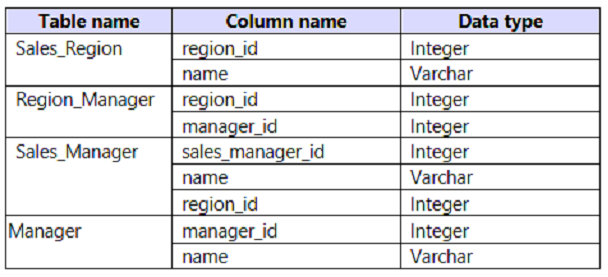DRAG DROP -
You create a data model in Power BI.
Report developers and users provide feedback that the data model is too complex.
The model contains the following tables.

The model has the following relationships:
✑ There is a one-to-one relationship between Sales_Region and Region_Manager.
✑ There are more records in Manager than in Region_Manager, but every record in Region_Manager has a corresponding record in Manager.
✑ There are more records in Sales_Manager than in Sales_Region, but every record in Sales_Region has a corresponding record in Sales_Manager.
You need to denormalize the model into a single table. Only managers who are associated to a sales region must be included in the reports.
Which three actions should you perform in sequence? To answer, move the appropriate actions from the list of actions to the answer area and arrange them in the correct order.
NOTE: More than one order of answer choices is correct. You will receive credit for any of the correct orders you select.
Select and Place:

